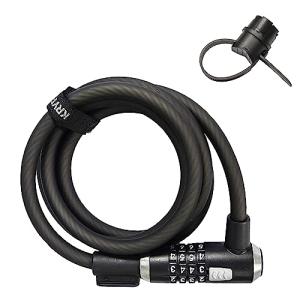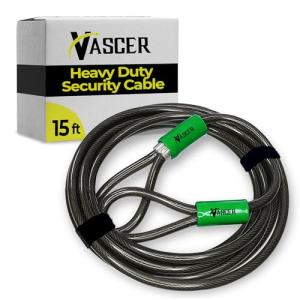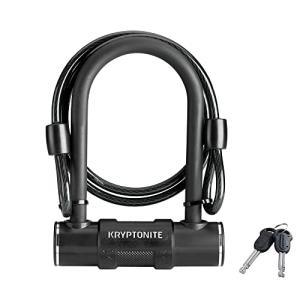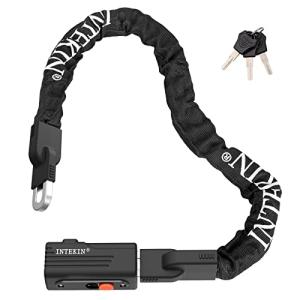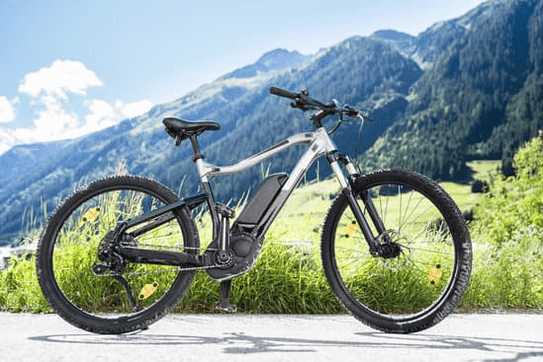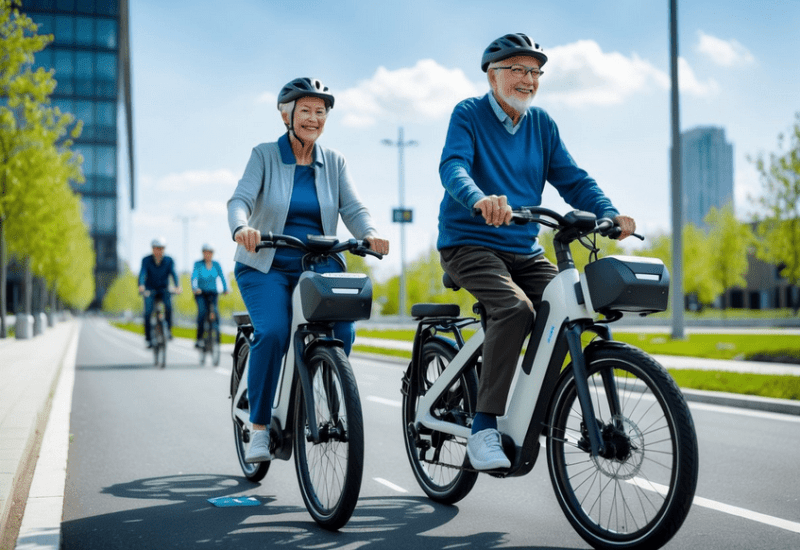Electric bikes, or e-bikes, have become increasingly popular in recent years for their eco-friendly nature and convenience. But have you ever wondered how these bikes charge while you pedal? In this article, we will delve into the fascinating world of e-bike charging.
With the rise in environmental consciousness, electric bikes have become a go-to mode of transportation for many. They offer the best of both worlds, combining the health benefits of traditional biking with the perk of an electric boost. But how exactly does the charging process work?
While pedaling an e-bike, a highly advanced system cleverly harnesses the kinetic energy generated to recharge the battery. Through a process called regenerative braking, the bike's motor acts as a generator, converting the energy from braking or pedaling into electrical energy. This energy is then stored in the battery, allowing you to keep riding for longer distances.
In this article, we will explore the mechanics behind this innovative charging system, detailing the key components involved and the benefits it brings. So, if you've ever been curious about how electric bikes charge while you pedal, join us as we unlock the mystery and shed light on this fascinating technology.
How do electric bikes work?
Electric bikes, commonly known as e-bikes, integrate traditional cycling mechanics with electric components to enhance the riding experience. At their core, e-bikes are designed to assist the rider in pedaling, making it easier to travel longer distances or tackle challenging terrains. The primary element that distinguishes an e-bike from a conventional bicycle is the electric motor, which provides propulsion assistance based on the rider's input. This motor can be located in various positions, such as the front wheel, rear wheel, or even in the bike’s frame, thereby influencing the overall ride quality and handling.
In addition to the motor, e-bikes are equipped with a battery that stores electrical energy. This battery typically comes in lithium-ion form, known for its efficiency, lightweight, and longevity. When the rider pedals, the motor draws power from the battery to provide assistance, which can be adjusted based on the rider's preference and the terrain. Most e-bikes come with multiple levels of assistance, allowing cyclists to choose how much support they want based on their fitness level and the conditions they are riding in.
Moreover, e-bikes are equipped with a controller that acts as the brain of the system. This component manages the power flow from the battery to the motor, ensuring that the assistance provided is proportional to the rider's pedaling effort. Advanced e-bikes come with integrated sensors that detect the rider's cadence and force, adjusting the motor output accordingly. This seamless integration of mechanical and electrical components makes e-bikes not only a great alternative to traditional biking but also a versatile solution for commuting and recreational riding.
Components of an electric bike charging system
The charging system of an electric bike consists of several critical components that work together to ensure efficient energy storage and retrieval. At the heart of this system is the battery, which serves as the primary energy reservoir for the e-bike. Most modern e-bikes use lithium-ion batteries due to their high energy density and relatively low weight. The battery is designed to provide power to the motor while also being rechargeable, which is essential for maintaining the bike's operational capabilities over extended periods.
Next, there is the motor, which plays a dual role in the charging process. While it assists in propelling the bike when pedaling, it can also operate as a generator during regenerative braking. This means that when the rider slows down or stops pedaling, the motor can convert kinetic energy back into electrical energy, sending it back to the battery for storage. This regenerative feature is vital for enhancing the overall efficiency of the e-bike, allowing it to harness energy that would otherwise be wasted.
Lastly, the controller is crucial for managing the entire system. It regulates how much power is sent from the battery to the motor and oversees the regenerative charging process. The controller ensures that energy is optimally used and that the battery is charged efficiently when the rider pedals or brakes. With advancements in technology, some e-bikes also feature smart controllers that can monitor battery health and energy consumption, providing valuable data to the rider about their charging status and overall performance.
The role of pedaling in charging an electric bike
Pedaling is a fundamental aspect of how electric bikes operate, not just for propulsion but also for charging the battery. When a rider pedals an e-bike, they are engaging in a dynamic process that generates kinetic energy. This energy, when harnessed correctly, can be converted into electrical energy, thus contributing to the battery's charge. The relationship between pedaling and charging is crucial, as it encourages riders to engage more actively with their bike while benefiting from the electric assistance.
The amount of energy generated through pedaling depends on several factors, including the rider's weight, the terrain, and the level of assistance chosen. As the rider pedals, the motor draws energy from the battery to provide support, but when the rider exerts more effort, the motor can be programmed to reduce its assistance, allowing for a more balanced energy exchange. This means that the harder the rider pedals, the more kinetic energy is available to be converted back into electrical energy during regenerative braking or even while coasting.
Additionally, the efficiency of this energy conversion process is influenced by the design of the motor and the overall system. High-quality e-bikes are engineered to optimize the relationship between pedaling and charging, ensuring that riders can maximize their efforts and extend their range. As a result, riders are not only contributing to their own physical fitness but also playing an active role in enhancing the bike's energy efficiency while enjoying the ride.
How does regenerative braking affect the charging process?
Regenerative braking is a pivotal feature of electric bikes that significantly enhances the charging process while riding. This system allows the bike's motor to reverse its role from that of a propeller to a generator when the rider slows down or applies the brakes. During this process, the kinetic energy that would typically be lost as heat during braking is converted back into electrical energy, which is then fed into the battery for storage. This innovative mechanism not only helps recharge the battery but also extends the overall range of the e-bike.
When the rider engages in braking, the controller detects the need for deceleration and adjusts the motor's function accordingly. Instead of consuming energy, the motor begins to generate it, utilizing the bike's momentum. This process is particularly effective on downhill slopes or during stop-and-go riding, where frequent braking occurs. The ability to harness this energy helps to improve the efficiency of the e-bike, allowing riders to travel further without the need for frequent battery recharges.
Furthermore, regenerative braking contributes to a more sustainable riding experience. By reducing the reliance on external charging sources, riders can enjoy longer journeys while minimizing their carbon footprint. However, it is essential to note that the effectiveness of regenerative braking can vary based on the bike's design and the rider's behavior. Riders who are aware of how to optimize their braking techniques can maximize the energy recovery during their rides, enhancing both the charging process and the overall efficiency of their electric bikes.
Factors affecting the charging efficiency while pedaling
The charging efficiency of an electric bike while pedaling can be influenced by various factors, which riders should be aware of to optimize their experience. One of the primary factors is the rider's pedaling technique and effort. The more power the rider generates through pedaling, the more energy is available for conversion into electrical energy. Riders who maintain a consistent and efficient pedaling rhythm can enhance their bike's charging capabilities, particularly during regenerative braking phases.
Another critical factor is the terrain on which the bike is being ridden. Steeper inclines require more effort from the rider, which can lead to greater energy generation when pedaling. Conversely, riding on flat surfaces may not produce as much kinetic energy, affecting the overall charging efficiency. Additionally, the presence of obstacles such as traffic lights, stop signs, and other interruptions can influence the frequency of braking, which is essential for regenerative charging. Riders navigating through urban environments may benefit more from regenerative braking opportunities compared to those riding on continuous, long-distance routes.
Lastly, the overall mechanical condition of the e-bike plays a significant role in charging efficiency. A well-maintained bike with properly lubricated components and inflated tires will operate more smoothly, enabling the rider to pedal more efficiently and generate more energy. Moreover, the quality of the battery and motor also affects the charging process, as high-performing components are better equipped to handle energy conversion. Regular maintenance and timely upgrades will ensure that the electric bike remains in optimal condition, ultimately enhancing its charging efficiency while pedaling.
Charging modes in electric bikes
Electric bikes typically come with various charging modes that allow riders to customize their experience based on personal preferences and riding conditions. These modes can significantly impact how the bike charges while pedaling and how much assistance the rider receives. The most common modes include eco, standard, and turbo, each designed for different scenarios and rider needs.
The eco mode is characterized by minimal power assistance, allowing the rider to engage more actively in pedaling. This mode is ideal for flat terrains or for riders looking to maximize their workout while still enjoying some electrical support. In this setting, the bike conserves battery life, making it possible to extend the range while still benefiting from the kinetic energy generated through pedaling and regenerative braking.
On the other hand, the standard mode provides a balanced level of assistance, making it suitable for a variety of terrains, including gentle hills and urban environments. This mode often allows for a more relaxed riding experience while still encouraging active pedaling. Riders can expect a moderate amount of battery consumption, which is ideal for daily commutes or leisurely rides.
Finally, the turbo mode offers maximum assistance, allowing riders to tackle steep hills and challenging terrains with relative ease. While this mode provides significant power support, it can also lead to quicker battery depletion. However, riders can still benefit from regenerative braking in this mode, as the motor can recover some energy while slowing down or stopping. By understanding these charging modes, riders can make informed choices that align with their riding style and battery management goals.
Tips for maximizing the charging capability of your electric bike
To fully harness the charging capabilities of an electric bike while pedaling, riders can adopt several effective strategies. First and foremost, maintaining a consistent pedaling cadence is essential. By developing a smooth and steady rhythm, riders can optimize the energy they generate, which can subsequently enhance the energy conversion process during regenerative braking. Practicing proper pedaling techniques not only improves efficiency but also helps riders enjoy a more comfortable ride.
Another important tip is to utilize the bike's different charging modes wisely. Riders should switch to eco mode during flat rides or while cruising on open roads, as it helps conserve battery life and encourages active pedaling. Conversely, when facing steep hills or challenging terrains, switching to turbo mode can provide the necessary support while still allowing for energy recovery. Adapting the mode based on the riding conditions is key to maximizing the bike's charging capacity.
Lastly, regular maintenance of the e-bike is crucial for optimizing its performance. Ensuring that the tires are properly inflated, the chain is lubricated, and the brakes are functioning correctly can improve the overall efficiency of the bike. A well-maintained electric bike will require less energy to operate, allowing riders to generate more energy through pedaling and recover energy through regenerative braking. By following these tips, riders can enhance their e-bike experience while benefiting from the charging capabilities while pedaling.
Common misconceptions about charging electric bikes while pedaling
Despite the growing popularity of electric bikes, several misconceptions surround the charging process while pedaling. One common belief is that e-bikes can charge their batteries solely through pedaling, eliminating the need for external charging sources. While pedaling does contribute to energy recovery, it is typically not enough to fully charge the battery. Most e-bikes require periodic recharging through a wall outlet to maintain optimal battery levels for extended rides.
Another misconception is that riding an e-bike in eco mode means the bike won't assist the rider at all. In reality, eco mode offers minimal assistance rather than no assistance. This mode encourages riders to engage in more active pedaling while still receiving some support from the motor. Many riders mistakenly believe that they need to switch to higher assistance modes to benefit from electric support, which can lead to unnecessary battery depletion.
Lastly, some riders assume that regenerative braking is a foolproof method to fully recharge the battery while riding. While this feature is indeed beneficial for recovering energy, it is not a standalone solution for battery maintenance. The amount of energy recovered through regenerative braking is often limited, and riders should not rely solely on this feature for battery longevity. Understanding these misconceptions helps riders cultivate realistic expectations about their electric bikes, ultimately leading to a more enjoyable and informed riding experience.
Conclusion: The future of electric bike charging technology
The future of electric bike charging technology holds exciting possibilities as advancements in engineering and innovation continue to evolve. As the demand for sustainable transportation solutions grows, manufacturers are investing in research and development to improve battery efficiency, charging speed, and energy recovery systems. This trend indicates a shift toward more efficient e-bike designs that maximize energy use and minimize environmental impact.
One potential area of growth is the development of ultra-fast charging systems that could reduce downtime significantly. Innovations in battery technology may lead to lighter, more powerful batteries that can be charged in a fraction of the time currently required. Additionally, integration with renewable energy sources such as solar panels could enable riders to charge their e-bikes in eco-friendly ways, further enhancing the sustainability aspect of electric biking.
Moreover, the rise of smart technology can transform how riders interact with their e-bikes. Advanced data analytics can provide insights into battery management, energy recovery, and optimal riding techniques, allowing users to maximize their charging capabilities while enjoying the ride. As electric biking continues to gain traction, the future appears bright for charging technology, promising a more efficient, sustainable, and enjoyable experience for riders worldwide.
